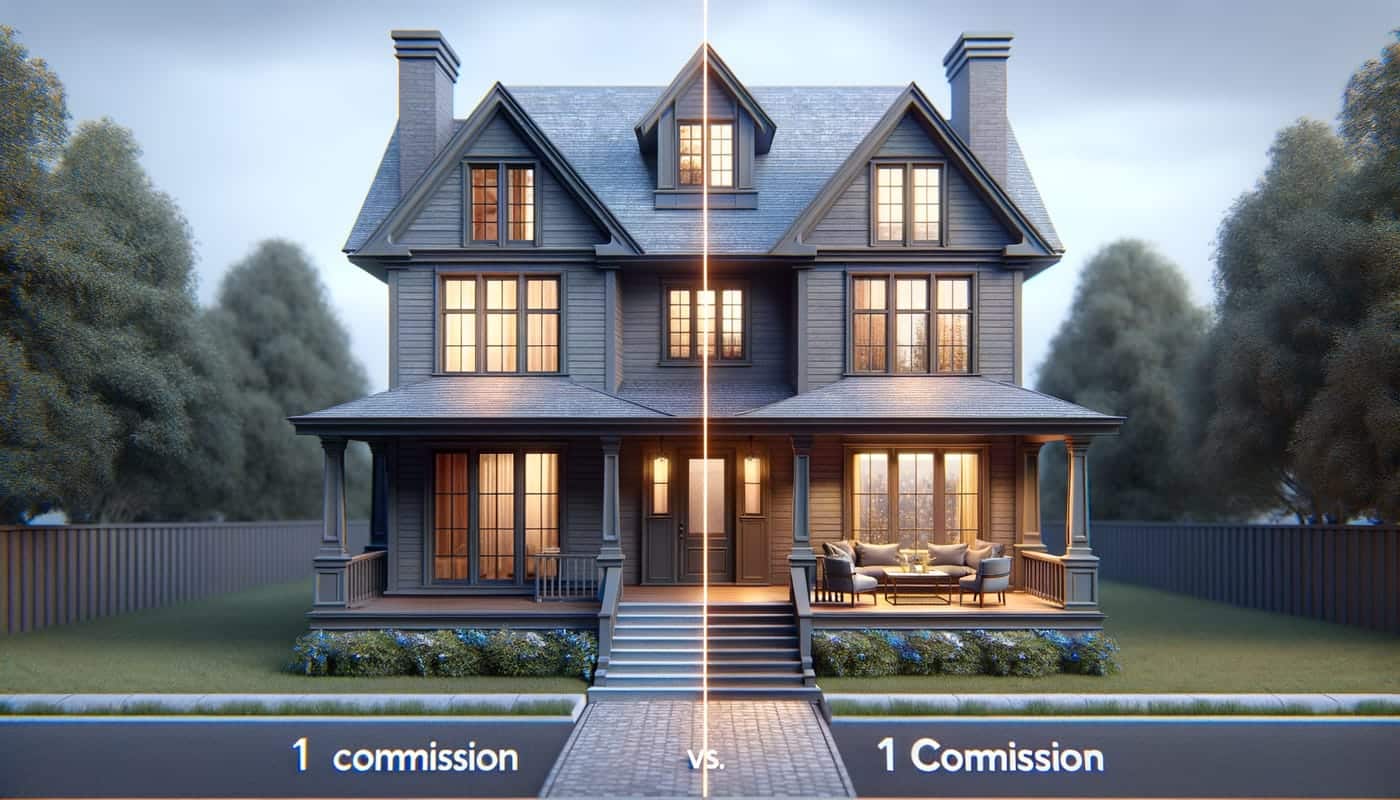Residential Real Estate Insights: The 1 Percent Commission Niche Perspective
The residential real estate market has always been in flux. For decades, a few core assumptions dictated how homes were bought and sold.
Chief among these was the idea of a fixed, often high, commission structure. This traditional model, however, has faced increasing scrutiny and resistance from homeowners.
Now, disruptive forces are changing the game. New approaches challenge the old guard, offering homeowners more control and significant savings.
This is where 1 Percent Lists comes in. My mission from day one has been to redefine what residential discount real estate brokers can achieve, listing homes for just a 1 percent commission.
We didn’t just tweak the system; we challenged conventional norms head-on. We showed the industry there was a better, fairer way to do business.
A dedicated focus on the 1 percent commission model yields distinct data and observations. This gives us unparalleled residential real estate insights into market operations and consumer economic patterns, insights that simply don’t come from traditional structures.
The 1 Percent Commission Model: A Catalyst for Unique Insights
Let’s be clear about what the 1 percent commission model really is. Its core principle is simple: significantly reduced seller costs through a simplified fee structure.
This isn’t just a local experiment. 1 Percent Lists has grown strategically, with dozens of franchises now covering the US. This broad reach allows us to collect data on a massive scale.
Mechanism of Disruption
Lower commissions directly impact seller financials. When homeowners keep more of their equity, it changes their entire approach to selling.
This model influences the overall market perception of real estate services. It forces a conversation about the real value agents provide, not just the percentage they demand.
Data Collection and Observation Advantages
Our model provides direct comparison points against traditional listings. We see firsthand how homes listed at 1 percent perform versus those at 5 or 6 percent.
We focus on efficiency metrics unique to the discount brokerage model. This allows us to track listing time, sale velocity, and overall transaction effectiveness with precision.
Distinct Data and Observations from the 1 Percent Niche
Operating with a 1 percent commission gives us a unique lens on the market. We see how fundamental financial shifts ripple through residential transactions.
Market Efficiency and Transaction Dynamics
Reduced commission often translates directly into faster listing times and improved sale velocity. Sellers are more motivated, and buyers recognize the potential for a better deal.
We analyze transaction volume in 1 percent dominated markets. These areas frequently show increased activity, indicating a more fluid and efficient market.
Seller Savings and Economic Reinvestment
We quantify the direct financial benefits to homeowners. The savings are substantial, often thousands of dollars on a single transaction.
These savings aren’t just theoretical. Homeowners frequently reinvest them into home improvements, or subsequent property purchases. This injects capital back into the economy.
Consumer Economic Patterns
Lower selling costs directly influence home affordability for sellers. It makes the decision to move less financially daunting and more accessible.
We also observe buyer behavior and negotiation in markets with prevalent 1 percent listings. Buyers often come to the table expecting a more reasonable approach to pricing, knowing the seller’s costs are lower.
Agent Adaptation and Performance Metrics
Our model shifts agent focus. Instead of chasing a few high-value transactions, agents prioritize volume and client satisfaction.
This demands operational efficiencies. Agents within the 1 percent model adopt streamlined processes, focusing on what truly matters for the client.
Residential Real Estate Market Operations Under the 1 Percent Model
The 1 percent commission model isn’t just about saving money. It changes how the entire residential real estate market operates.
Pricing Strategies and Market Competitiveness
Reduced selling costs enable more aggressive or competitive home pricing. Sellers can price their homes more attractively without sacrificing their net proceeds.
This influences market equilibrium and property valuations. When a significant portion of listings are cost-optimized, it sets a new baseline for what sellers expect to pay in fees.
Marketing and Exposure in a Cost-Optimized Environment
We leverage technology and digital platforms for broad market reach. You don’t need a huge commission to get your home seen by millions of potential buyers.
Effective strategies for maintaining visibility with lower marketing budgets are key. This means smarter, more targeted marketing, not just throwing money at the problem.
Brokerage Innovation and Operational Streamlining
This model pushes for innovation. We adopt advanced CRM and listing management systems to handle volume efficiently.
There’s a constant emphasis on scalable processes and client-centric service delivery. This isn’t just about cutting costs; it’s about optimizing the entire selling experience.
Contrasting with Traditional Commission Structures
To truly understand the impact of the 1 percent model, we need to compare it directly to traditional structures. The differences are stark.
Cost Disparities and Financial Implications
There are direct disparities in total selling costs for homeowners under both models. A 5-6 percent commission can eat deeply into equity, sometimes tens of thousands of dollars.
This analysis reveals how commission structures dramatically influence net proceeds for sellers. A higher commission means less money in the homeowner’s pocket, period.
Market Dynamics and Agent Incentives
Traditional commission structures shape agent behavior and negotiation tactics. Agents are incentivized to push for the highest price, often at the expense of sale speed or seller flexibility.
This also impacts market entry barriers for new agents and brokerage competition. The old model protects incumbents and stifles innovation.
The Future of Real Estate Commissions
Trends indicate a clear shift towards more transparent and cost-effective models. Consumers are savvier, and they’re no longer content to pay exorbitant fees without question.
Consumer preference evolution is undeniable in a competitive market. They demand value, efficiency, and fairness, which is exactly what the 1 percent model delivers.
It’s why the old thinking about commissions is outdated. Remember 3 Percent Is The New 6 isn’t just a catchy phrase; it’s a reflection of market reality.
Conclusion
The 1 percent commission model provides unparalleled data on residential real estate. It’s a lens through which we see the true market mechanics, unclouded by inflated fees.
This approach reaffirms the profound impact on market operations and consumer economic behavior. It’s a system designed to work for the homeowner, not just the agent.
Grant Clayton’s vision and the future of real estate are intertwined with this disruption. 1 Percent Lists was founded on a truth-telling ethos, and that hasn’t changed. Our approach continually shakes up the industry, much like when Covid Killed Real Estate but the market adapted.
The 1 percent model remains highly relevant. It is shaping a more efficient and transparent residential real estate market for everyone involved.
Frequently Asked Questions
What is the primary difference between a 1 percent commission model and traditional real estate commissions?
The 1 percent commission model charges sellers significantly less than traditional brokers. This reduces home selling costs, keeping more equity in the homeowner’s pocket. Traditional models often charge 5-6%, eating into profits.
How does the 1 percent commission model affect residential real estate market efficiency?
Yes, by reducing the financial burden on sellers, the 1 percent model can make home prices more competitive. This can attract more buyers and potentially shorten the time a home spends on the market, contributing to market efficiency.
What are the economic benefits for homeowners who use a 1 percent commission broker?
Sellers benefit directly from retaining more of their home’s equity. This extra capital can be reinvested into their next property, home improvements, or other financial goals, boosting their overall economic position.
Does this model impact how real estate agents and brokerages operate?
The 1 percent model forces agents and brokerages to focus on high-volume transactions and operational efficiency. This leads to brokerage innovation, leveraging technology for broader reach and streamlined processes rather than relying on high individual commissions.
What kind of unique insights does the 1 percent commission niche offer?
The 1 percent model generates unique residential real estate insights by providing direct data on how lower costs influence seller behavior, buyer negotiation, and overall market dynamics. This perspective differs significantly from observations based on traditional, higher-commission listings.

